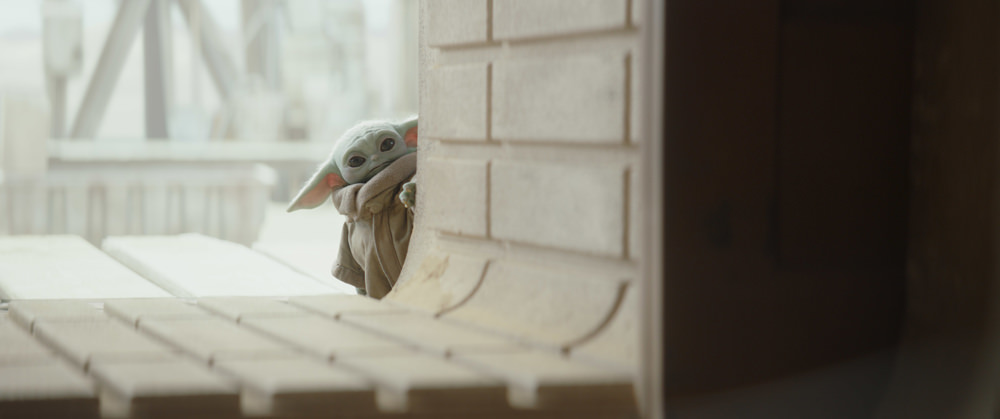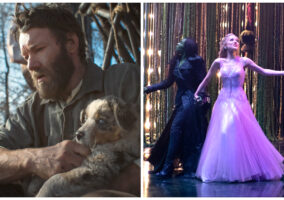
When the first season of The Mandalorian premiered, it felt like it caught nearly everyone – critics, viewers and Star Wars fans – a little off guard. After so many Star Wars films and cartoons and books and games, no one really had reason to expect that a little show about a character no one had heard of wandering through the detritus of an already over-explored universe would be much reason to get excited. When the character the public dubbed “Baby Yoda” debuted at the end of the first episode, hearts across media and fandom instantly went aflutter. It would be a mistake, however, to conclude that The Mandalorian found a fervent audience and critical acclaim simply because the Star Wars Shop had created yet another cute toy. While “The Child,” as the little green toddler is called in-story, became instantly iconic, the reason The Mandalorian succeeded had less to do with its little bundle of star quality and more to do with a kind of old-fashioned storytelling that had fallen so far out of favor it wound up feeling fresh to audiences in 2019.
The stories The Mandalorian tells tend to be simple affairs and most of the episodes of the first season were self-contained and well under an hour long, making the show stand out all the more in this time of prestige television and Netflix bloat. It turns out, you can tell interesting stories about nuanced characters without engaging in eons-long arcs and torturous back stories. You can tell fun adventure tales without necessarily redefining evil or devising an over-complicated protagonist. And most refreshing of all, The Mandalorian proved that you can tell episodic TV stories that feel like the essence of Star Wars without indulging in or even skirting around the melodrama of the Skywalker family or the Jedi; a Star Wars without an Empire or a rebellion; just a slightly familiar universe populated by people trying to get by. That’s what made it all so fun and refreshing. The sites, easter eggs, and background players were enough to set a fan atingle, but the stories were not the usual epic clash of good vs. evil. Instead, they were a series of small clashes between people trying to survive and beings who make survival difficult. Classic heroic cowboy or traveling knight tales with a reluctantly moral hero who just happened to be Batman, more or less. It was a combination of story and stylistic elements that seemed both obvious and genius at the same time.

With the launch of its sophomore season, we held our breath, wondering if the show was going to Ewok this one up. Yes, it’s a verb now. Because we said so. Our point here: When a series becomes a surprise hit, to the point that it becomes something of a cultural flashpoint – especially if all the fervor surrounds an extremely marketable and merchandisable character like Baby Yoda – there’s a huge danger of it leaning too far into the gimmicky, cutesy, marketable aspects of its success upon its return. Show creator Jon Favreau wrote and directed the premiere and we’re relieved to report that he clearly knows what he has and knows what the appeal of the show really is and he’s so confident in that appeal that he saw no reason to be subtle about it. He’s a gunslinger and a dragonslayer, you say? Here. Have a sheriff and a dragon to kick things off.
Din Djarin (the titular Mandalorian) has been charged with finding The Child’s (Baby Yoda) people and returning it to them. Reasoning that he needs the underground network of hidden Mandalorians to guide his quest, he returns to the familiar sites of Tatooine where another member of the tribe is said to be living. We honestly didn’t make the connection to Boba Fett right away, but as soon as Timothy Olyphant showed up (looking better in the presumed-dead mercenary’s armor than a body has a right to), we had that lovely easter-egg-induced a-ha moment. Olyphant plays Cobb Vanth, a character from the Star Wars book universe making his first onscreen appearance and the self-appointed protector of a remote mining town. Djarin, despite his demeanor and line of work, has been shown time and again to be a deeply moral and ethical man. While the Mandalorian code allowed him the right to kill Vanth and take his armor, he instead chose to help him out of a bad situation and save the town by literally slaying a dragon. There’s no good reason for Djarin to be spending this much time and this much effort for people he doesn’t know, especially when he’s been tasked with doing something else. This is a huge part of the character’s appeal and a secret to the show’s success. He will always stop along the way, make friends and allies, help folks out, and leave for the next adventure. It’s such a simple premise and it’s been done more times than we can count, but in this age of convoluted storytelling and “It’s really a 10-hour movie” seasons of television, it feels fresh and, in its own way, kind of revolutionary.

Of course there’s a larger story and arc happening, and we have no doubt that Cobb Vanth will be making more appearances along the way. We can add him to the small group of warriors, travelers and allies Djarin is compiling simply by doing good deeds on his journey. With the tribe of Mandalorians scattered and in hiding, the mystery of The Child’s origins, the dangerously crumbling remnants of The Empire, and the evil Moff Gideon in hot pursuit of the little force-wielding muppet, there’s a lot of threads to weave through this season’s tale. And with that last-second reveal of Temuera Morrison (almost certainly as Boba Fett), the story got just a little more complicated and just a little closer to the universe of the main films. We’ll see if Favreau and his team can keep all of these plates spinning while maintaining the show’s freshness and simplicity, but so far, things are looking pretty great.
Halloween Goddess Elvira for Vogue Magazine Next Post:
Craig Green Spring 2021 Menswear Collection
Please review our Community Guidelines before posting a comment. Thank you!



